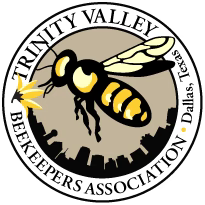Your Cart is Empty
Live Removal & Relocation of Bees in a Structure on your Property:
The Trinity Valley Beekeepers Association recommends bee-friendly live removal & relocation by a professional bee remover if the colony is located within a homestead structure (i.e. soffit, roof, floor or wall).
Removal of colonies or swarms elsewhere, for instance in a water meter or irrigation box, a tree branch (not the trunk), etc. can often be handled by a local beekeeper with experience in such activities.
A live bee removal and relocation from a structure is no more invasive than a properly performed extermination, yet does not include chemicals, or killing the bees.
Whereas a proper extermination of a colony located in a structure requires removal of the wax comb and honey as well as “just getting rid of the bees,” TVBA advocates LIVE honey bee removal and relocation, rather than EXTERMINATION.
This allows for proper handling not only of the bees, but also of the leftover remains of the comb, resources, etc.
An exterminator who does not remove the comb from the structure has left the job half done, to the detriment of their customer. Leaving comb, honey, dead bees, and other organic material in a structure will cause fermentation, mold, and decay, which will often lead to more costly issues in the future. It attracts other animals and insects as well as having a strong likelihood of attracting a new swarm of bees
once the toxins dissipate.
A live relocation is better for agriculture, better for the environment, and better for your home. So, if you have unwanted honey bees, contact a professional bee remover for a live removal and relocation.
Our food supply is dependent on the continued existence of honey bees for crop pollination; it makes no sense to deliberately kill off the
pollinators that feed us.
Trinity Valley Beekeepers Association does not recommend a specific removal service. Click the link below and we can help you get in touch with beekeeper for swarms and professional removers for bees in structures who may assist you.
We also recommend you visit Texas Association of Professional Bee Removers for a list of vetted, professional removers in your area for a comprehensive search for the best solution to your needs.
TVBA Live Removal & Relocation Request Form
